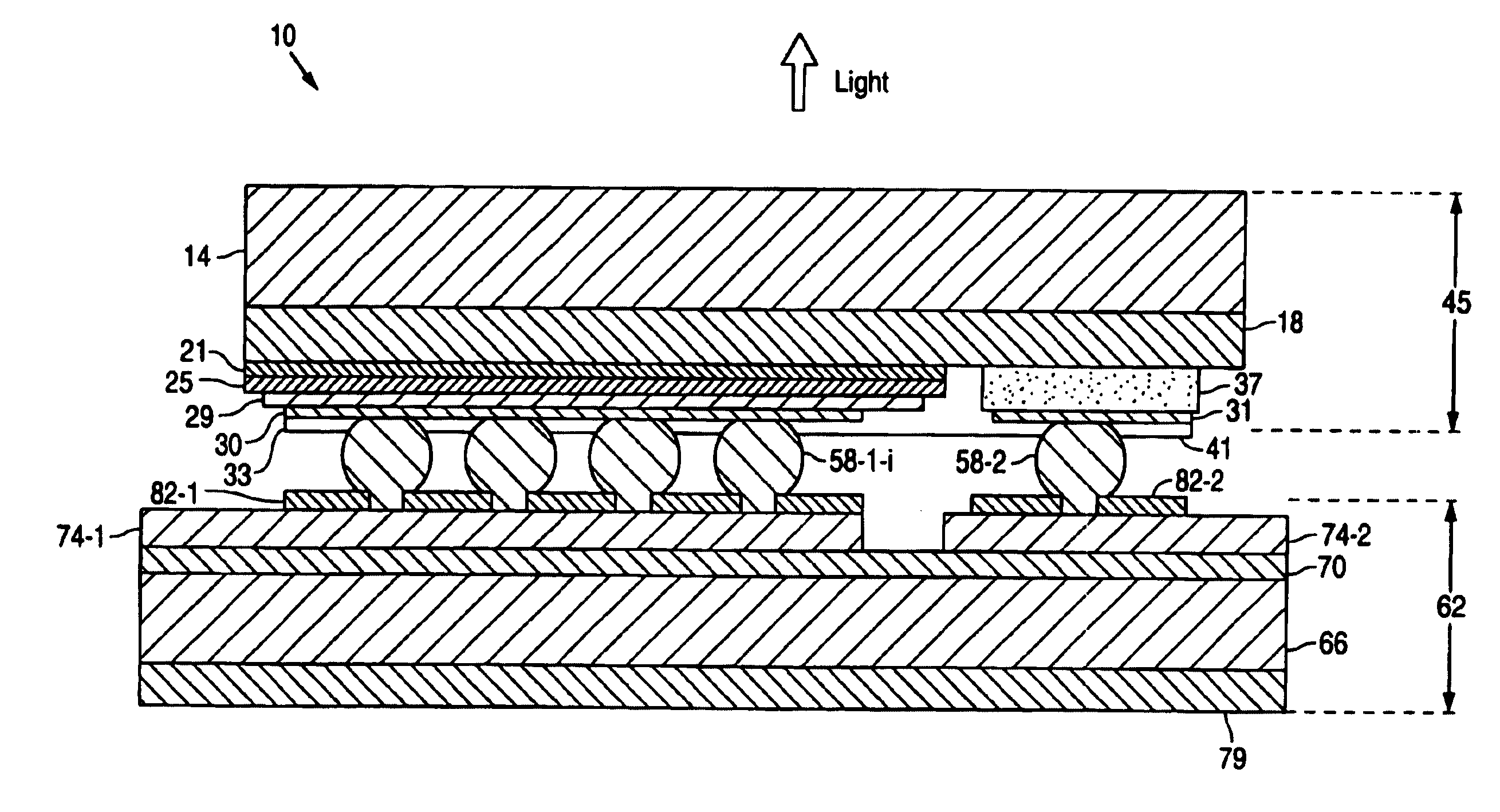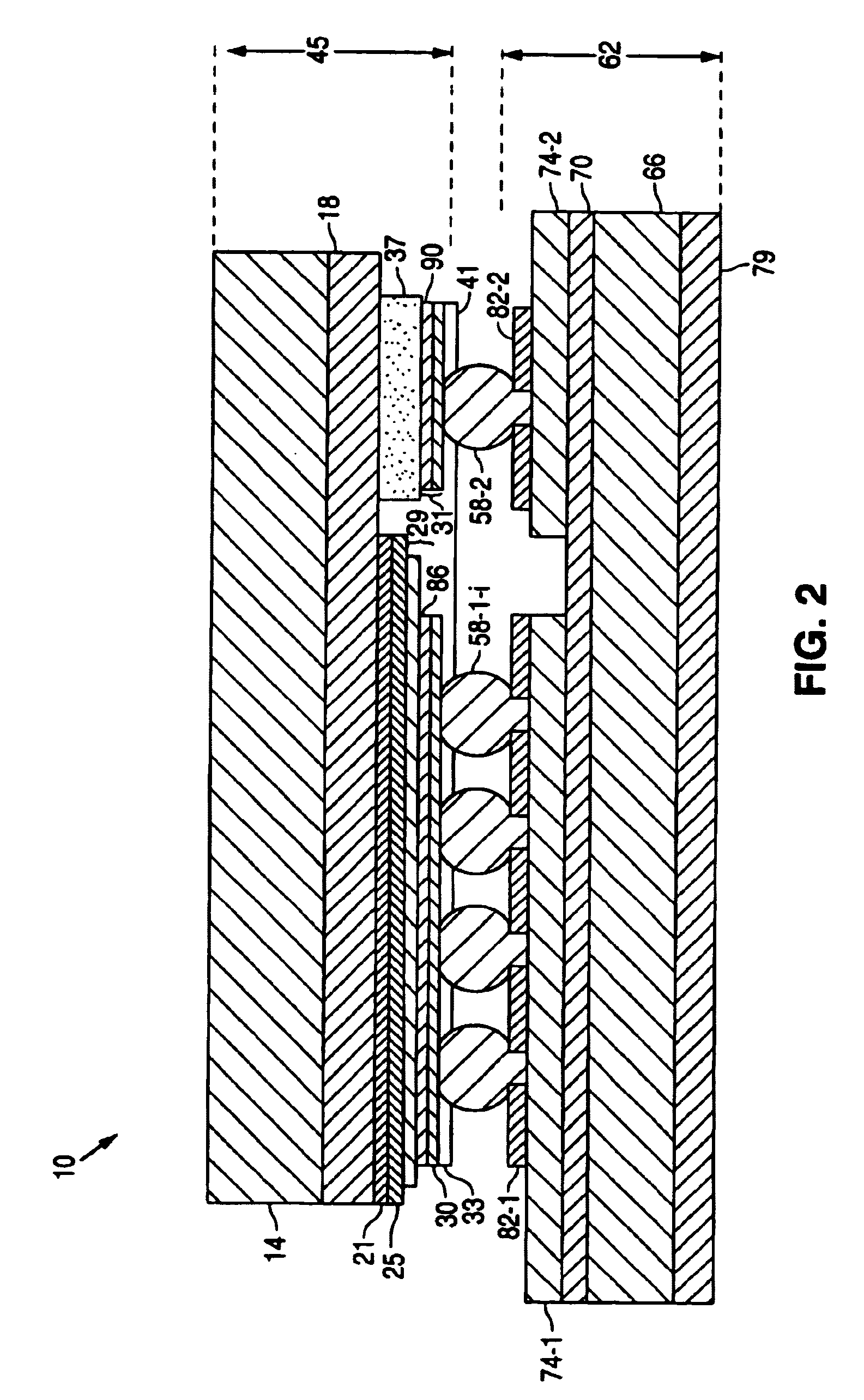High-powered light emitting device with improved thermal properties
- Summary
- Abstract
- Description
- Claims
- Application Information
AI Technical Summary
Benefits of technology
Problems solved by technology
Method used
Image
Examples
Embodiment Construction
[0016]FIG. 1 illustrates a III-nitride flip chip light emitting device according to embodiments of the present invention. Aspects of the flip chip design illustrated in FIG. 1 are described in more detail in U.S. Pat. No. 6,486,499, issued Nov. 26, 2002, titled “III-Nitride Light-Emitting Device With Increased Light Generating Capability,” and incorporated herein in its entirety by this reference. In flip chip 10, die 45 is manufactured, then flipped and mounted on submount 62 such that light is extracted from the device through growth substrate 14. The manufacture of the flip chip light emitting diode 10 starts with the die 45. Die 45 is manufactured initially by epitaxially depositing semiconductor material on a substrate by molecular beam epitaxy, metal-organic chemical vapor deposition, or any other suitable epitaxial technique. Metals are then deposited and patterned on the semiconductor material to form contacts. An interconnect material is then used to connect the submount 62...
PUM
 Login to View More
Login to View More Abstract
Description
Claims
Application Information
 Login to View More
Login to View More - R&D
- Intellectual Property
- Life Sciences
- Materials
- Tech Scout
- Unparalleled Data Quality
- Higher Quality Content
- 60% Fewer Hallucinations
Browse by: Latest US Patents, China's latest patents, Technical Efficacy Thesaurus, Application Domain, Technology Topic, Popular Technical Reports.
© 2025 PatSnap. All rights reserved.Legal|Privacy policy|Modern Slavery Act Transparency Statement|Sitemap|About US| Contact US: help@patsnap.com



